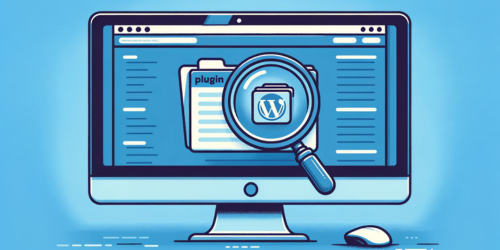Have you ever pondered how the digital world’s backbone, WordPress, has evolved to become the linchpin of countless websites? At the heart of this evolution lie two pivotal elements: posts and pages. These components are not just mere features; they are the very essence that shapes the anatomy of over 40% of the web.
In this article, we’re not just skimming the surface. We’re unraveling the intricate tapestry of WordPress posts and pages. Their evolution is more than a technical upgrade; it’s a revolution in how we disseminate information online. Understanding these elements is not just beneficial; it’s essential for anyone looking to master the art of effective website management.
From the dynamic, ever-changing world of posts to the static, foundational role of pages, we’ll navigate through their functionalities, their impact on SEO, and how they intertwine to create a harmonious web presence. This journey is about grasping the full potential of these tools, ensuring your website isn’t just a drop in the digital ocean, but a beacon of well-structured, engaging content.
1. Understanding WordPress Posts: Dynamics and Significance
In the realm of WordPress, posts are the pulsating heartbeats of your website. They are dynamic entries, displayed in reverse chronological order on your blog page. This means your most recent insights are always front and center, capturing immediate attention. Posts are the epitome of freshness and movement in your digital space, constantly evolving with your latest thoughts, news, or offerings.
The dynamic nature of posts is not just about keeping your website alive; it’s a strategic tool for engaging visitors. Each post is an opportunity to connect, to share a piece of knowledge, or to tell a story that resonates with your audience. This continuous stream of fresh content is not just pleasing to your readers; it’s gold for search engine optimization (SEO). Search engines like Google adore fresh content, and regularly updated websites often find themselves favored in search rankings.
2. Exploring WordPress Pages: Static but Essential
While posts are the ever-changing narrative of your website, pages stand as its pillars. Pages in WordPress are static, meaning once published, they rarely change. These are the pages like ‘About Us’, ‘Contact’, or ‘Services’ – the core information that defines your website and brand. They provide a consistent structure and are often the first port of call for visitors seeking to understand what you and your website are all about.
Pages form the backbone of your site’s navigation, helping visitors find the information they need efficiently. Their static nature lends a sense of permanence and reliability, crucial for building trust with your audience. They are the chapters of your website’s story that remain constant, providing a stable foundation upon which the dynamic posts can weave their ever-changing tales.
3. Strategic Use of Posts and Pages: Best Practices
Mastering the art of using WordPress posts and pages is akin to conducting an orchestra. Each element plays a vital role, and when harmonized, they create a symphony of engaging and effective content. The key is balance and strategic planning.
When it comes to posts, think of them as your platform for ongoing dialogue with your audience. They should be used to publish regular updates, insights, and stories that keep your audience coming back for more. The layout of your posts should be reader-friendly, incorporating elements like subheadings, bullet points, and images to break up text and enhance readability.
Pages, on the other hand, should be used for foundational content. This includes information about your business, contact details, and other static information. The layout here should be straightforward and easy to navigate, providing clear pathways to the information your visitors seek.
A balanced approach to using both posts and pages is crucial for a well-structured website. Your posts keep the site dynamic and engaging, while your pages provide the necessary stability and foundational information.
4. SEO and User Engagement: Leveraging Posts for Better Rankings
In the digital marketing universe, SEO is the gravitational force that pulls traffic towards your website. Regularly updated WordPress posts are a powerful tool in this context. Each new post is a fresh page for search engines to index, and this frequent indexing can significantly improve your site’s visibility in search results. Moreover, posts with relevant, high-quality content can attract backlinks, further enhancing your SEO.
To create posts that resonate with your audience and boost search rankings, consider the following tips:
- Focus on Quality Content: Write informative, engaging posts that provide real value to your readers. Use tools like Answer the Public to understand what your audience is searching for.
- Optimize for Keywords: Identify relevant keywords and naturally incorporate them into your posts. Tools like Google Keyword Planner can be invaluable for this.
- Engage with Multimedia: Incorporate images, videos, and infographics to make your posts more engaging and shareable.
- Encourage Interaction: End your posts with a call-to-action, inviting readers to comment or share. This interaction signals to search engines that your content is engaging and valuable.
5. Integrating Posts and Pages: A Harmonious Web Presence
Creating a seamless integration between posts and pages enhances the user experience and strengthens your website’s structure. Here are strategies to achieve this harmony:
- Consistent Navigation: Ensure your website’s navigation is intuitive, with a clear menu that links to important pages and categories of posts. This helps users find what they’re looking for with ease.
- Internal Linking: Strategically link your posts to relevant pages and vice versa. This not only aids navigation but also distributes page authority throughout your site, which can improve SEO.
- Unified Theme and Style: Maintain a consistent theme and style across both posts and pages to create a cohesive brand image.
6. Common Pitfalls to Avoid with Posts and Pages
While managing WordPress posts and pages, certain pitfalls can hinder your website’s effectiveness. Here are some to watch out for:
- Neglecting SEO in Pages: Often, the focus on SEO is limited to posts. Remember, pages need optimization too. Use clear, descriptive titles and meta descriptions.
- Inconsistent Posting Schedule: Sporadic posting can disengage your audience. Maintain a regular posting schedule.
- Overlooking Mobile Responsiveness: With the increasing use of mobile devices, ensure your posts and pages are mobile-friendly.
To avoid these pitfalls, regularly review your website’s performance and user engagement. Tools like Google Analytics can provide valuable insights, helping you make informed adjustments.
7. Conclusion: Mastering Posts and Pages for a Winning WordPress Site
Mastering the art of WordPress posts and pages is akin to weaving a rich tapestry of content that engages, informs, and captivates. Remember, posts are your dynamic storytellers, keeping your audience hooked with fresh, SEO-friendly content. Pages, in contrast, are the steadfast pillars providing essential information with a consistent touch.
Harmonizing these elements with strategic planning, SEO optimization, and user engagement techniques is key to elevating your WordPress site. Embrace these insights, apply them diligently, and watch as your website transforms into a beacon of well-structured, compelling content in the vast digital landscape.
8. Frequently Asked Questions
Q. Where do my WordPress posts go?
Your WordPress posts are stored in your website’s database and are displayed on your website based on your theme’s design. They are not stored as individual files.
Q. Where are WordPress posts saved?
WordPress posts are saved in the MySQL database associated with your WordPress installation. They are stored in the wp_posts table of the database.
Q. Why can’t I find my posts on WordPress?
If you can’t find your posts on WordPress, it could be due to visibility settings, such as posts being saved as drafts or being scheduled for future publication. Check the ‘Posts’ section in your WordPress dashboard to see their status.
Q. Where are posts published in WordPress?
Published posts in WordPress appear on your website’s blog page or on the homepage, depending on your theme’s configuration and settings. They are also accessible directly via their unique URLs.



